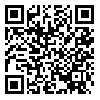BibTeX | RIS | EndNote | Medlars | ProCite | Reference Manager | RefWorks
Send citation to:
URL: http://journal.nkums.ac.ir/article-1-283-en.html
Background & Objectives: Head lice infestation also known as Pediculosis capitis is one of the common diseases in children. Head lice are obligate blood-feeding human ectoparasite that is one of the public health problems in spite health promotion and medical sciences progress. Infestation observed worldwide but overcrowded living conditions, poverty and lack of hygiene can be associated to head lice prevalence. Head lice infestation causes not only physical symptoms but also psychological effects and social pressures. The aim of this study was to determine the prevalence rate and epidemiological factors related to Pediculosis capitis infestation among elementary students in the city of Bojnurd, north east of Iran. Materials and methods: The study was conducted from January to March 2013 in all elementary schools of Bojnurd city, North Khorasan province, Iran and used systematic random sampling. Totally 1475 students between 6-14 years old were examined. Students in the schools were examined by trained and experienced researchers under the supervision of medical entomologist. The diagnosis of pediculosis was confirmed by presence of egg, nymph or adult lice. A special questionnaire was completed for students. The data were analyzed by SPSS software version16 using chi-square and proper statistical tests. Results: Infestation was determined 7.7%. Females showed significantly greater infestation(12.4%) than male (2.9%). There was a significant relationship between head lice infestation and sex, family size, number of rooms , bathing facilities in the home, shared use of personal belongings, hair length, presence of health teacher, frequency use of comb and finally use of scarf in room in females (P<0.05). Conclusion: The prevalence of pediculosis in elementary schools in Bojnurd is an important public health problem especially in female's schools. Collaborative and participation efforts among physicians, health teachers, and parents are necessary to maintain effective epidemiological surveillance and provide treatment
Received: 2015/03/14 | Accepted: 2015/03/14 | Published: 2015/03/14
| Rights and permissions | |
 |
This work is licensed under a Creative Commons Attribution-NonCommercial 4.0 International License. |





